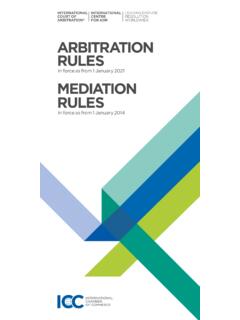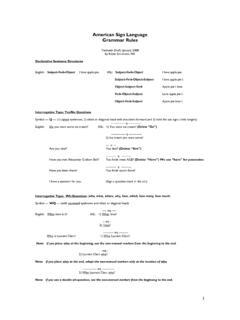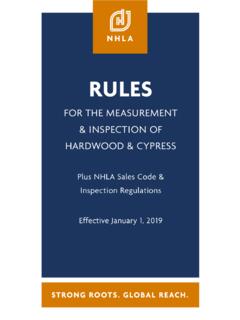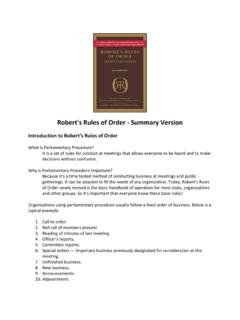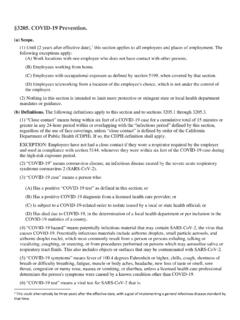Transcription of Phonology: The Sound Patterns of Language
1 01:615:201 Introduction to Linguistic Theory Adam Szczegielniak phonology : The Sound Patterns of Language Copyright in part: Cengage learning phonology : The Sound Patterns of Language There are only a dozen or so features needed to describe every speech Sound in every human Language All the languages in the world Sound so different because the way the languages use speech sounds to form Patterns differs from Language to Language The study of how speech sounds form Patterns is phonology phonology tells us what sounds are in a Language , how they do and can combine into words.
2 And explains why certain phonetic features are important to identifying a word The Pronuncia-on of Morphemes: Plurals Some-mes certain morphemes are pronounced differently depending on their context For example, the English plural morpheme has three different pronuncia-ons depending on what noun you a@ach it to: It gets pronounced as a [z] for words like cab, bag, and bar It gets pronounced as [s] for words like cap, back, and faith It gets pronounced as [ z] for words like bus, garage, and match The Pronunciation of Morphemes: Plurals To determine a rule for when each variant of the plural morpheme, or allomorph, is used, it is useful to create a chart to examine the phonological environments in which each allomorph occurs.
3 The Pronuncia-on of Morphemes: Plurals To help us figure out what is different between the phonological environments of the words that take the [- s], [- z], and [- z] allomorphs, we can look for minimal pairs A minimal pair is two words with different meanings that are iden-cal except for one Sound that occurs in the same place in each word Minimal pairs whose members take different forms of the plural allomorph are par-cularly helpful for our purposes For example, cab [k b] and cap [k p]
4 Differ only by their final Sound , so since each word takes a different allomorph, we can assume that the allomorph is selected based on the final Sound of the noun The Pronuncia-on of Morphemes: Plurals Now we can make our chart a li@le more succinct since we know we are looking only at the final Sound of each noun: Then we can make generaliza-ons about the environment in which each allomorph occurs based on knowledge of natural classes [z] occurs aMer voiced nonsibiliant segments [s] occurs aMer voiceless nonsibilant segments [ z] occurs aMer sibilant segments The Pronuncia-on of Morphemes.
5 Plurals We can simplify this even more by crea-ng a rule that assumes /z/ is the basic or underlying form of the plural, then we have two rules to explain why the other allomorphs occur: 1. Insert a [ ] before the plural morpheme /z/ when a regular noun ends in a sibilant, giving [ z] 2. Change the plural morpheme /z/ to a voiceless [s] when preceded by a voiceless Sound We can write this in rule format /z/ - > [s] / [- voice] _ The Pronunciation of Morphemes: Plurals This chart illustrates how the plurals of bus, butt, and bug are formed by applying these two rules : The Pronunciation of Morphemes.
6 Plurals These rules must be ordered so that rule 1 applies before rule 2, otherwise we would derive an incorrect phonetic form The particular phonological rules that determine the phonetic form of morphemes are morphophonemic rules Addi-onal Examples of Allomorphs The English possessive morpheme and the third person singular morpheme have allomorphs that take on the same phone-c form as the plural morpheme and are governed by the same rules : Possessive: Add [z] to woman to get woman s Add [s] to ship to get ship s Add [ z] to judge to get judge s Third person singular.
7 Add [z] to need to get needs Add [s] to eat to get eats Add [ z] to rush to get rushes Addi-onal Examples of Allomorphs The English past tense morpheme also has different pronuncia-ons depending on the last Sound of the verb If the verb ends in any voiced Sound except [d], then you add a [d] to make it past tense If the verb ends in any voiceless segment other than [t], then you add [t] to make it past tense If the verb ends in [t] or [d] then you add [ d] to make it past tense Most languages have allomorphemic varia-on.
8 For example, Akan has three allomorphs for a nega-ve marker: The rule that changes the pronuncia-on of the nasal consonants is called the homorganic nasal rule Phonemes: The Phonological Units of Language Phonemes are the basic unit of Sound and are sensed in your mind rather than spoken or heard Each phoneme has one or more sounds called allophones associated with it, which represent the actual Sound being produced in various environments Vowel phonemes in English When you do these subs-tu-ons you are crea-ng minimal pairs, such as in this list.
9 This list demonstrates that this dialect of English has fourteen different vowel phonemes: /i e u o a / and /a /, /a / and / / And all of these phonemes has at least two allophones; The nasal version, which occurs before nasal consonants The oral version, which occurs elsewhere Illustration of nasal Allophones English contains an allophonic rule that determines contexts in which vowels are nasalized: Vowels are nasalized before a nasal consonant within the same syllable structure You could change the nasalization when you pronounce these words (if you were aware that you did this) and although it would Sound strange, it would not change the meaning of the words Because nasalized vowels are not used to make a meaning contrast we tend to not even notice them Allophones of /t/ Consonants also have allophones.
10 6ck [th k] s6ck [st k] hits [h ts] bi7er [b r] /t/ is pronounced [th] before a stressed vowel /t/ is pronounced [t] directly before or aMer [s] /t/ is pronounced [ ] between a stressed and unstressed vowel If we pronounce 6ck as [t k] or [ k] instead of [th k], we are s-ll speaking the same word, even if it sounds strange because these allophones of /t/ do not contrast However, if we tried to pronounce 6ck as [s k]










